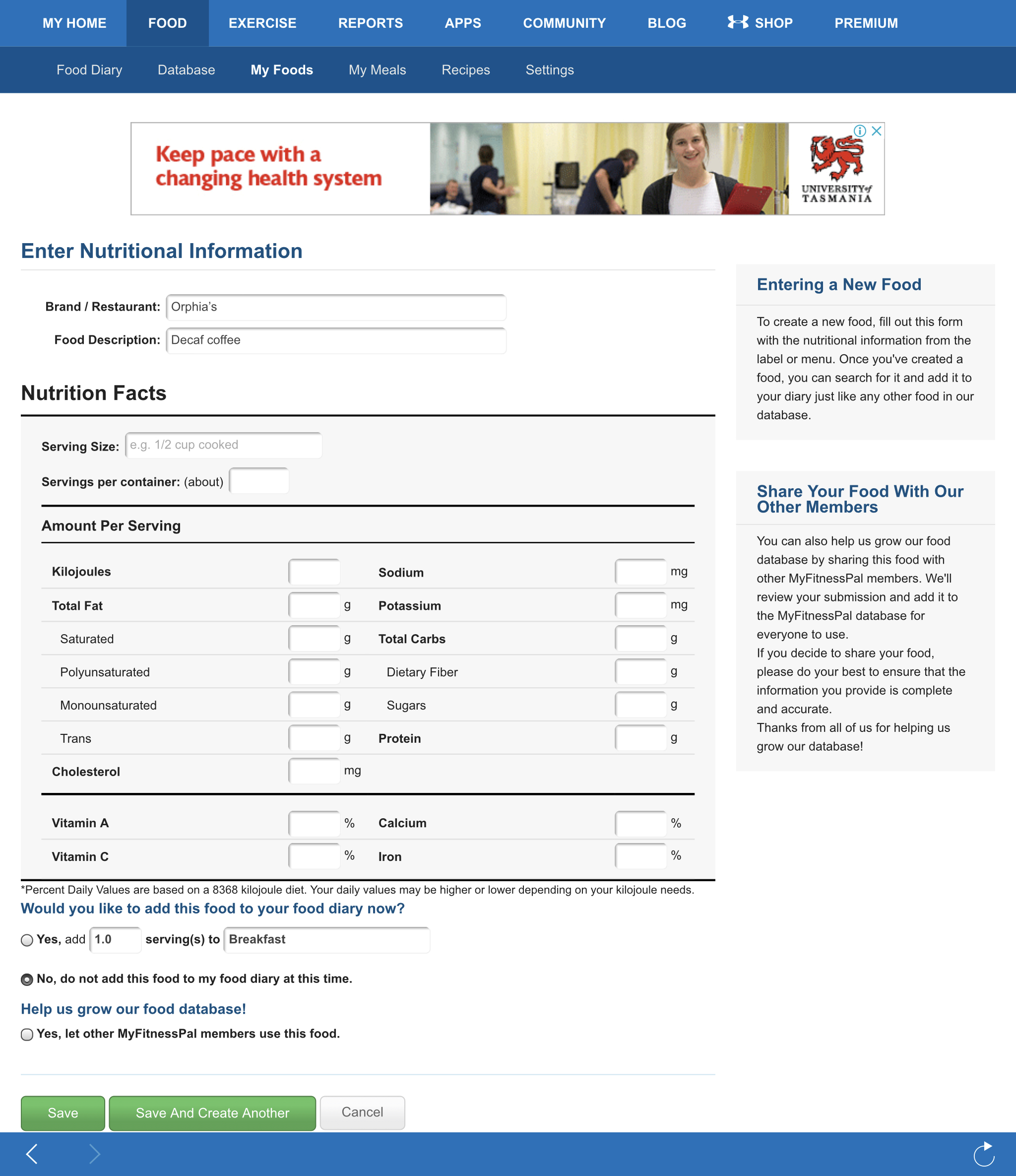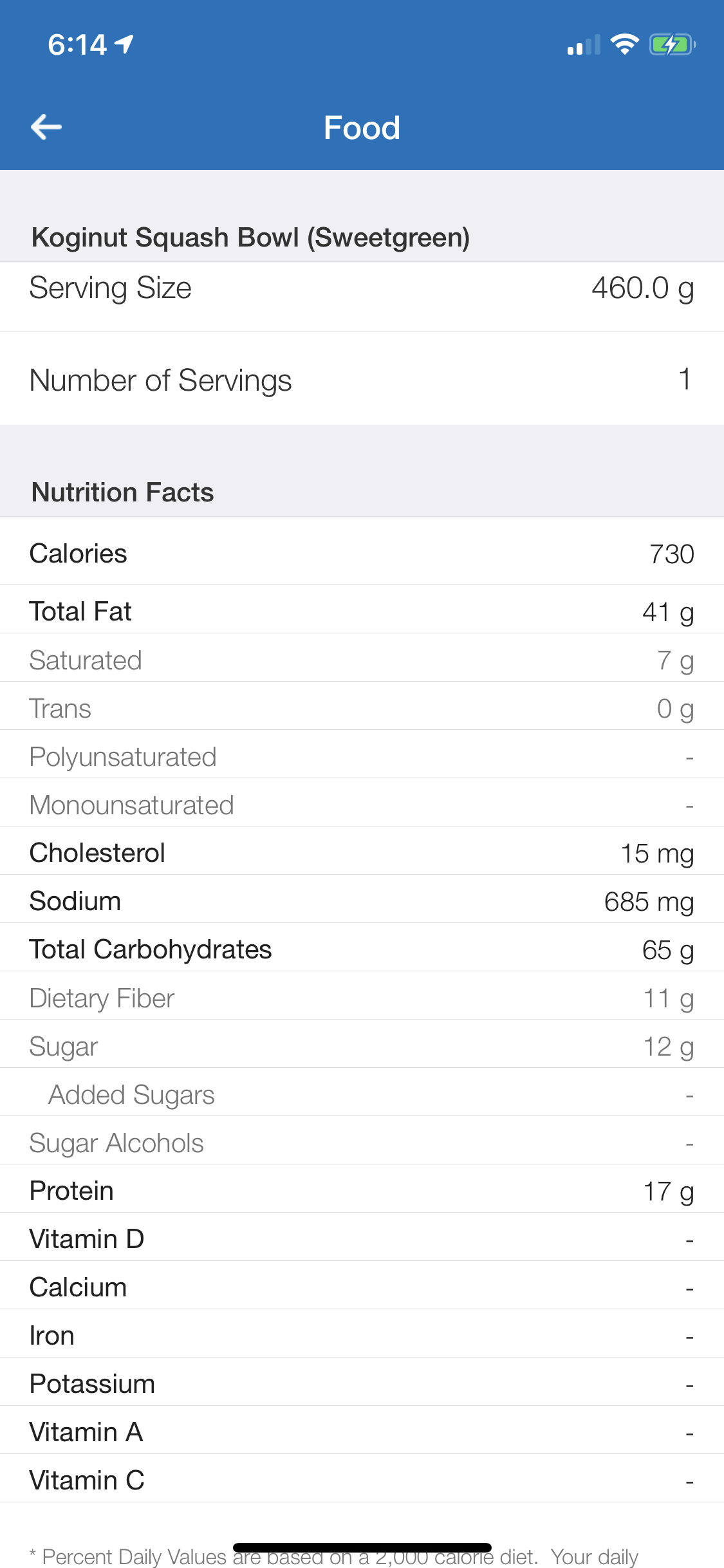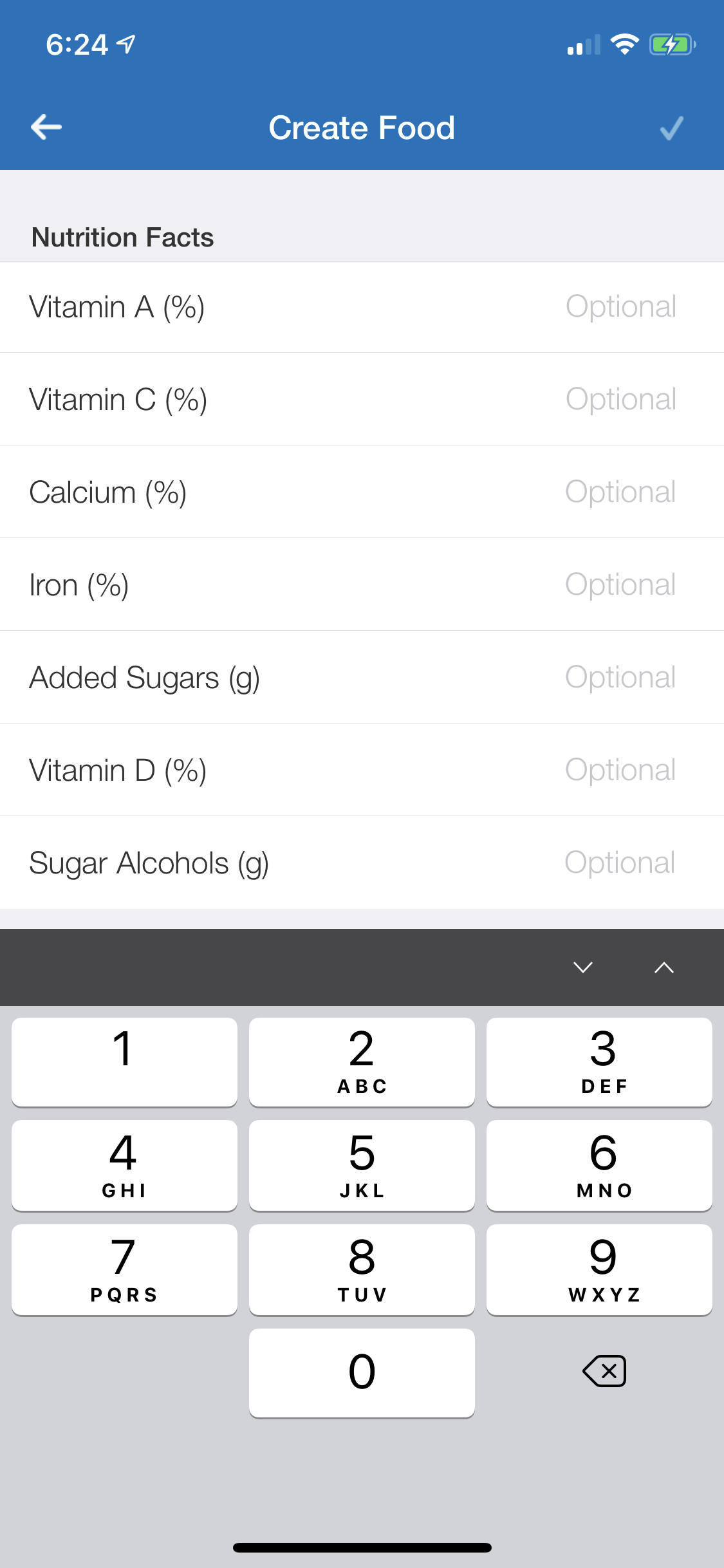added sugar

renae941
Posts: 3 Member
My doctor told me to watch my added sugar. I have found that some labels list added sugar and some do not. Is there a way to figure out what had extra sugar added and what is natural sugar?
0
Replies
-
Without it being labeled as such, no.
Just stay away from products that are pre-prepared like boxed mixes, jarred sauces, and of course any dessert-type item or prepared baked things like protein bars. I look at bread labels and see how much sugar is listed. Are you diabetic or pre-diabetic?
Using as many whole foods as possible is the best solution. I usually can stay pretty close to 60g total sugars (which includes lactose and fructose from fruit and other naturally occurring sugar) on MyFitnessPal's food journal by using less dairy and fewer breads. I don't eat cereal, that was a big one.5 -
My doctor told me to watch my added sugar. I have found that some labels list added sugar and some do not. Is there a way to figure out what had extra sugar added and what is natural sugar?
If you understand the food it should be reasonably easy to tell. Some things (like some pasta sauces) will have both inherent and added sugar, but it's probably not that much added sugar (and your body can't actually tell the different -- your doctor is probably just trying to give you an easy way to improve diet quality).
If you focus on eating more whole foods added sugar is not an issue.6 -
My doctor told me to watch my added sugar. I have found that some labels list added sugar and some do not. Is there a way to figure out what had extra sugar added and what is natural sugar?
Anything you buy ready in a box, bag or a can will have some sort of sugar / sweetener added UNLESS it specifically says that there are none of either added. You will be surprised where manufacturers add sweetener these days. Read the labels and not just watch for "sugar". Sugar comes by many many many names these days.
This isn't necessarily true. For example, you can get plain steel cut oats or pasta that does not say "no sugar added." Those products would have a 0 for sugar content, however.
Lots of boxed, bagged, and canned products (most canned tomatoes, canned beans are some other examples) do not have added sugar.
Agree with reading the labels, and also just know the foods and whether they inherently should have sugar, and check whether it has any sugar (added or not).6 -
My doctor told me to watch my added sugar. I have found that some labels list added sugar and some do not. Is there a way to figure out what had extra sugar added and what is natural sugar?
Anything you buy ready in a box, bag or a can will have some sort of sugar / sweetener added UNLESS it specifically says that there are none of either added. You will be surprised where manufacturers add sweetener these days. Read the labels and not just watch for "sugar". Sugar comes by many many many names these days.
I can buy ready-to-eat rice that doesn't have any added sweetener and it doesn't specifically say it doesn't.
I mean, I will buy that *many* ready-to-eat foods have sugar added to them unless it's specifically called out, but it isn't all of them.4 -
Until the labeling laws catch up, learn as many synonyms as you can for added sugar, and read ingredients lists:
Sugar, dehydrated cane juice, sucrose, fructose, high-fructose corn syrup (HFCS), barley malt, honey, maple syrup, dextrose, maltose, rice syrup, concentrated fruit juice (generically or specific fruit named), corn syrup, molasses, dextrin, sorghum, treacle, caramel, . . . and many, many more.
Natural (inherent) sugar will not be separately listed on the ingredients list, but will affect the sugar grams on the product label. Some common things that include substantial amounts of natural/inherent sugars are fruits, some vegetables, and no-sugar-added dairy products.
For some products (such as yogurt) you can compare labels of a sugar-added version of the same brand/flavor to a plain no-sugar-added one, and estimate the added sugar as being the difference in sugars for a same-sized serving of the two. That will be a little off (for example, if the non-plain yogurt has fruit in addition to added sugars), but most of the difference will be the added sugars in most cases.
As you get experienced, this gets easier. The more "whole foods" you eat (and cook with) vs. multi-ingredient packaged foods, the easier the job is. ("Whole foods" in quotes because the definition is squishy, but I mean things like rice vs. multi-ingredient packaged pilaf, fruit vs. cookies, plain yogurt (adding your own fruit if desired) vs. flavored, plain meat vs. meats packaged in sauces, etc.).4 -
What was your doctors reasoning for this...?12
-
My doctor told me to watch my added sugar. I have found that some labels list added sugar and some do not. Is there a way to figure out what had extra sugar added and what is natural sugar?
Anything you buy ready in a box, bag or a can will have some sort of sugar / sweetener added UNLESS it specifically says that there are none of either added. You will be surprised where manufacturers add sweetener these days. Read the labels and not just watch for "sugar". Sugar comes by many many many names these days.
This isn't necessarily true. For example, you can get plain steel cut oats or pasta that does not say "no sugar added." Those products would have a 0 for sugar content, however.
Lots of boxed, bagged, and canned products (most canned tomatoes, canned beans are some other examples) do not have added sugar.
Agree with reading the labels, and also just know the foods and whether they inherently should have sugar, and check whether it has any sugar (added or not).
That isn't necessarily true either. Regular dried pasta, made from wheat flour, has about 3 grams of naturally occurring sugar per 100 g of product, because wheat, like most plant foods, contains some simple sugars. Dried oats have about 1 g of naturally occurring sugar per 100 g of product, because oats, like most plant foods, contain some simple sugars.
But I agree with your main point, which is that there are many foods in boxes, bags, and cans that do not have added sugar or other sweeteners.3 -
pinggolfer96 wrote: »What was your doctors reasoning for this...?
Don't understand why this is getting woo'd?
It's a very sensible question - the suggestion from the Doctor might be because OP is overweight and reducing sugar might be one way to reduce calories, OP might have a medical condition where monitoring or reducing sugar intake might be helpful.
I would add an additional question about where making the distinction between natural & added sugars came from. Why exactly does it matter if the sugar is intrinsic in the food concerned or has been added? Your body doesn't know the source of the sugar and still takes calories from both.
Reading food labels and understanding the ingredients is a good idea - if you don't understand something don't fear it, just research it and then make an educated decision.12 -
I agree with above poster, pinggolfer96 (don’t understand why it was wooed), it’s an excellent question, “what was your doctors reasoning”? Maybe pre-diabetic? OP, would you clarify the reason?
Sugar occurs naturally in many foods as well as more sugar (in various forms) being added in to many processed foods. As others stated, there are many names for sugar, learn to recognize them when you are reading labels.
A good way to control sugar intake is to cook from scratch OP. You will be able to control what actually goes into your foods.2 -
lynn_glenmont wrote: »My doctor told me to watch my added sugar. I have found that some labels list added sugar and some do not. Is there a way to figure out what had extra sugar added and what is natural sugar?
Anything you buy ready in a box, bag or a can will have some sort of sugar / sweetener added UNLESS it specifically says that there are none of either added. You will be surprised where manufacturers add sweetener these days. Read the labels and not just watch for "sugar". Sugar comes by many many many names these days.
This isn't necessarily true. For example, you can get plain steel cut oats or pasta that does not say "no sugar added." Those products would have a 0 for sugar content, however.
Lots of boxed, bagged, and canned products (most canned tomatoes, canned beans are some other examples) do not have added sugar.
Agree with reading the labels, and also just know the foods and whether they inherently should have sugar, and check whether it has any sugar (added or not).
That isn't necessarily true either. Regular dried pasta, made from wheat flour, has about 3 grams of naturally occurring sugar per 100 g of product, because wheat, like most plant foods, contains some simple sugars. Dried oats have about 1 g of naturally occurring sugar per 100 g of product, because oats, like most plant foods, contain some simple sugars.
But I agree with your main point, which is that there are many foods in boxes, bags, and cans that do not have added sugar or other sweeteners.
Good point -- I checked my pasta and it has 2 g, but no added sugar. It's been a long time since I bothered looking at the sugar content on a box of pasta. Bigger point is that you can look at the ingredient list and see no sugar added, and there will be no sugar added in many products that do not say "no sugar added."
Similarly, a can of tomatoes will (usually) have no added sugar, but will of course have sugar -- you can look at the ingredients and see what's in there.4 -
I would add an additional question about where making the distinction between natural & added sugars came from. Why exactly does it matter if the sugar is intrinsic in the food concerned or has been added? Your body doesn't know the source of the sugar and still takes calories from both.
My suspicion is that some doctors assume people won't be very strict so if you say watch added sugars the main effect will be avoiding foods that have a lot of calories from added sugars -- i.e., sweets or other foods that tend not to be very nutritious for the calories. I think they assume this is either easier to follow or less likely to offend people than saying you want to improve the nutrient-density of your diet and cut down on dessert foods or some such.
I don't think focusing on added sugar (especially minimal amounts) is all that helpful if that's really the goal -- there are lots of lower nutrient foods that are fine in moderation but not great to fill up your diet with that aren't high sugar, and not every is especially focused on sugary things, and I highly doubt consuming some ketchup or what not is going to have negative effects on anyone's health (unless they are allergic). But I suspect that's what the doctor is after, basic "eat foods where more of the calories are from nutrient dense sources."Reading food labels and understanding the ingredients is a good idea - if you don't understand something don't fear it, just research it and then make an educated decision.
Yup.
I'd add that if the issue is diabetes/pre diabetes balancing carbs is more important than just focusing on sugar, and that highly refined or low fiber starch-based carbs can often be as problematic as sugar for people with this issue (white rice is worse than sugar for a friend of mine, probably because of total amounts in a meal).
If the issue is low-nutrient meals, adding in protein and vegetables would be the most important thing (IMO), and if the issue is simply high cals without a lot of nutrition, watching added fat may be as or more important than sugar.
Reading labels and becoming educated on what food contains is great in any case.7 -
there are naturally occuring sugars that are on the label as "sugar"
if there are added sugars, i have seen them listed below the main sugar line.1 -
My doctor told me to watch my added sugar. I have found that some labels list added sugar and some do not. Is there a way to figure out what had extra sugar added and what is natural sugar?
Not really, but you can read the ingredients and if sugar is listed, it is added sugar...the higher up on the list of ingredients, the more added sugar there is...like if it's the first ingredient, it's the main ingredient.
Focus more on whole foods. There will be added sugar in things like pasta sauce, ketchup, etc but it's usually pretty nominal. Limit things like cookies, pastries, candy, sodas, and other sweets.2 -
there are naturally occuring sugars that are on the label as "sugar"
if there are added sugars, i have seen them listed below the main sugar line.
There's a new label that shows added sugars below total sugars, but it hasn't been made mandatory yet (they pushed back the date), so it's only on a smaller number of products where the manufacturer has elected to start using them.4 -
there are naturally occuring sugars that are on the label as "sugar"
if there are added sugars, i have seen them listed below the main sugar line.
There's a new label that shows added sugars below total sugars, but it hasn't been made mandatory yet (they pushed back the date), so it's only on a smaller number of products where the manufacturer has elected to start using them.
I don't particularly watch my sugar (usually don't have much in my day-to-day diet anyway) but I'm really looking forward to this out of a sense of curiosity.2 -
there are naturally occuring sugars that are on the label as "sugar"
if there are added sugars, i have seen them listed below the main sugar line.
There's a new label that shows added sugars below total sugars, but it hasn't been made mandatory yet (they pushed back the date), so it's only on a smaller number of products where the manufacturer has elected to start using them.
I've seen the new labels on a few products recently. They've also added potassium and Vitamin D (no more Vitamin A and C). The MFP database now has those fields included (in the app). Looked up the new compliance date...The FDA extended the compliance dates for the Nutrition Facts and Supplement Facts label final rule and the Serving Size final rule, from July 26, 2018 to January 1, 2020, for manufacturers with $10 million or more in annual food sales. Manufacturers with less than $10 million in annual food sales would receive an extra year to comply – until January 1, 2021.4 -
there are naturally occuring sugars that are on the label as "sugar"
if there are added sugars, i have seen them listed below the main sugar line.
There's a new label that shows added sugars below total sugars, but it hasn't been made mandatory yet (they pushed back the date), so it's only on a smaller number of products where the manufacturer has elected to start using them.
I don't particularly watch my sugar (usually don't have much in my day-to-day diet anyway) but I'm really looking forward to this out of a sense of curiosity.
At least it should help reduce the "rename sugar" arms race, where they keep using a new form or term to hide it in plain sight on ingredients lists. "Evaporated cane juice" my left baby-toe!5 -
there are naturally occuring sugars that are on the label as "sugar"
if there are added sugars, i have seen them listed below the main sugar line.
There's a new label that shows added sugars below total sugars, but it hasn't been made mandatory yet (they pushed back the date), so it's only on a smaller number of products where the manufacturer has elected to start using them.
I don't particularly watch my sugar (usually don't have much in my day-to-day diet anyway) but I'm really looking forward to this out of a sense of curiosity.
At least it should help reduce the "rename sugar" arms race, where they keep using a new form or term to hide it in plain sight on ingredients lists. "Evaporated cane juice" my left baby-toe!
Exactly what I was thinking - it's hard to keep up with ever-evolving marketing vocabulary 2
2 -
there are naturally occuring sugars that are on the label as "sugar"
if there are added sugars, i have seen them listed below the main sugar line.
There's a new label that shows added sugars below total sugars, but it hasn't been made mandatory yet (they pushed back the date), so it's only on a smaller number of products where the manufacturer has elected to start using them.
I don't particularly watch my sugar (usually don't have much in my day-to-day diet anyway) but I'm really looking forward to this out of a sense of curiosity.
Same for me.2 -
there are naturally occuring sugars that are on the label as "sugar"
if there are added sugars, i have seen them listed below the main sugar line.
There's a new label that shows added sugars below total sugars, but it hasn't been made mandatory yet (they pushed back the date), so it's only on a smaller number of products where the manufacturer has elected to start using them.
I've seen the new labels on a few products recently. They've also added potassium and Vitamin D (no more Vitamin A and C). The MFP database now has those fields included (in the app). Looked up the new compliance date...The FDA extended the compliance dates for the Nutrition Facts and Supplement Facts label final rule and the Serving Size final rule, from July 26, 2018 to January 1, 2020, for manufacturers with $10 million or more in annual food sales. Manufacturers with less than $10 million in annual food sales would receive an extra year to comply – until January 1, 2021.
Which app are you using? I got all excited because I really didn't think MFP would go to the trouble of adding those fields, but when I tried creating a food on the Android app, there was no vitamin D field. And potassium was always a field in MFP, because it was an optional field (like mono and poly unsaturated fats) on U.S. nutrition labels.
You lifted up my hopes, only to dash them down again.
3 -
there are naturally occuring sugars that are on the label as "sugar"
if there are added sugars, i have seen them listed below the main sugar line.
There's a new label that shows added sugars below total sugars, but it hasn't been made mandatory yet (they pushed back the date), so it's only on a smaller number of products where the manufacturer has elected to start using them.
I've seen the new labels on a few products recently. They've also added potassium and Vitamin D (no more Vitamin A and C). The MFP database now has those fields included (in the app). Looked up the new compliance date...The FDA extended the compliance dates for the Nutrition Facts and Supplement Facts label final rule and the Serving Size final rule, from July 26, 2018 to January 1, 2020, for manufacturers with $10 million or more in annual food sales. Manufacturers with less than $10 million in annual food sales would receive an extra year to comply – until January 1, 2021.
I just tried creating a new food, and no, it doesn’t have Vitamin D, and it still has A and C, and it always had Potassium.
1 -
there are naturally occuring sugars that are on the label as "sugar"
if there are added sugars, i have seen them listed below the main sugar line.
There's a new label that shows added sugars below total sugars, but it hasn't been made mandatory yet (they pushed back the date), so it's only on a smaller number of products where the manufacturer has elected to start using them.
I've seen the new labels on a few products recently. They've also added potassium and Vitamin D (no more Vitamin A and C). The MFP database now has those fields included (in the app). Looked up the new compliance date...The FDA extended the compliance dates for the Nutrition Facts and Supplement Facts label final rule and the Serving Size final rule, from July 26, 2018 to January 1, 2020, for manufacturers with $10 million or more in annual food sales. Manufacturers with less than $10 million in annual food sales would receive an extra year to comply – until January 1, 2021.
I just tried creating a new food, and no, it doesn’t have Vitamin D, and it still has A and C, and it always had Potassium.
I think it's maybe on its way, being phased in. In the Android app, displaying an existing food includes lines for added sugars, sugar alcohols, and vitamin D as well as A & C, though values aren't populated yet in the few entries I checked. The new fields aren't in the food add function yet, though. The database display page in the web app doesn't show the new fields yet at all.1 -
lynn_glenmont wrote: »there are naturally occuring sugars that are on the label as "sugar"
if there are added sugars, i have seen them listed below the main sugar line.
There's a new label that shows added sugars below total sugars, but it hasn't been made mandatory yet (they pushed back the date), so it's only on a smaller number of products where the manufacturer has elected to start using them.
I've seen the new labels on a few products recently. They've also added potassium and Vitamin D (no more Vitamin A and C). The MFP database now has those fields included (in the app). Looked up the new compliance date...The FDA extended the compliance dates for the Nutrition Facts and Supplement Facts label final rule and the Serving Size final rule, from July 26, 2018 to January 1, 2020, for manufacturers with $10 million or more in annual food sales. Manufacturers with less than $10 million in annual food sales would receive an extra year to comply – until January 1, 2021.
Which app are you using? I got all excited because I really didn't think MFP would go to the trouble of adding those fields, but when I tried creating a food on the Android app, there was no vitamin D field. And potassium was always a field in MFP, because it was an optional field (like mono and poly unsaturated fats) on U.S. nutrition labels.
You lifted up my hopes, only to dash them down again.
I use the iPhone app and have premium... 0
0 -
I just tried creating a new food, and no, it doesn’t have Vitamin D, and it still has A and C, and it always had Potassium.
I have it...
RE: potassium... I was not referring to the app but the new labels. It will be required in the new labeling (and no longer require vitamin A & C).0 -
I think it's maybe on its way, being phased in. In the Android app, displaying an existing food includes lines for added sugars, sugar alcohols, and vitamin D as well as A & C, though values aren't populated yet in the few entries I checked. The new fields aren't in the food add function yet, though. The database display page in the web app doesn't show the new fields yet at all.
Yeah, they are probably doing some kind of phased process. I do have the fields in the food add function (see image in post above)... I have premium so maybe that has something to do with it?0 -
I think it's maybe on its way, being phased in. In the Android app, displaying an existing food includes lines for added sugars, sugar alcohols, and vitamin D as well as A & C, though values aren't populated yet in the few entries I checked. The new fields aren't in the food add function yet, though. The database display page in the web app doesn't show the new fields yet at all.
Yeah, they are probably doing some kind of phased process. I do have the fields in the food add function (see image in post above)... I have premium so maybe that has something to do with it?
Or iOS may be the difference, since free Android differs from web.0
This discussion has been closed.
Categories
- All Categories
- 1.4M Health, Wellness and Goals
- 397K Introduce Yourself
- 44.2K Getting Started
- 260.9K Health and Weight Loss
- 176.3K Food and Nutrition
- 47.6K Recipes
- 232.8K Fitness and Exercise
- 456 Sleep, Mindfulness and Overall Wellness
- 6.5K Goal: Maintaining Weight
- 8.7K Goal: Gaining Weight and Body Building
- 153.3K Motivation and Support
- 8.3K Challenges
- 1.3K Debate Club
- 96.5K Chit-Chat
- 2.6K Fun and Games
- 4.6K MyFitnessPal Information
- 16 News and Announcements
- 18 MyFitnessPal Academy
- 1.4K Feature Suggestions and Ideas
- 3.1K MyFitnessPal Tech Support Questions











